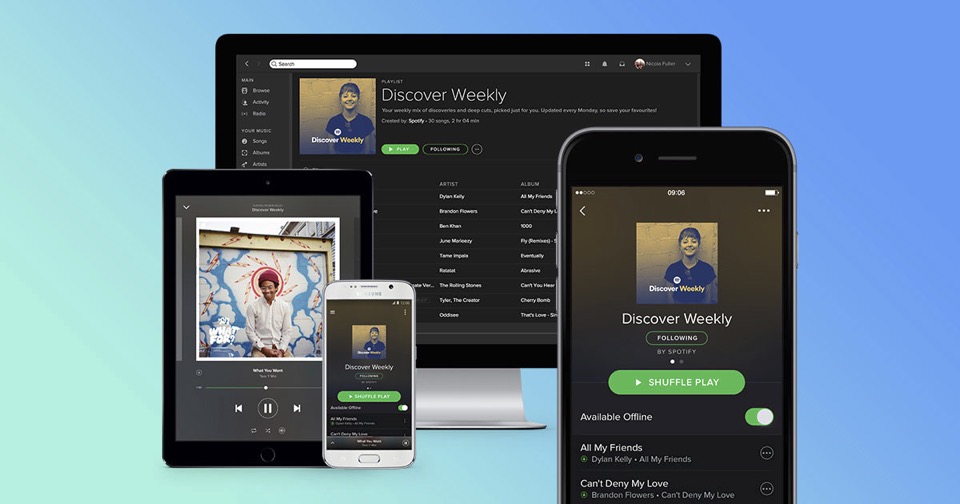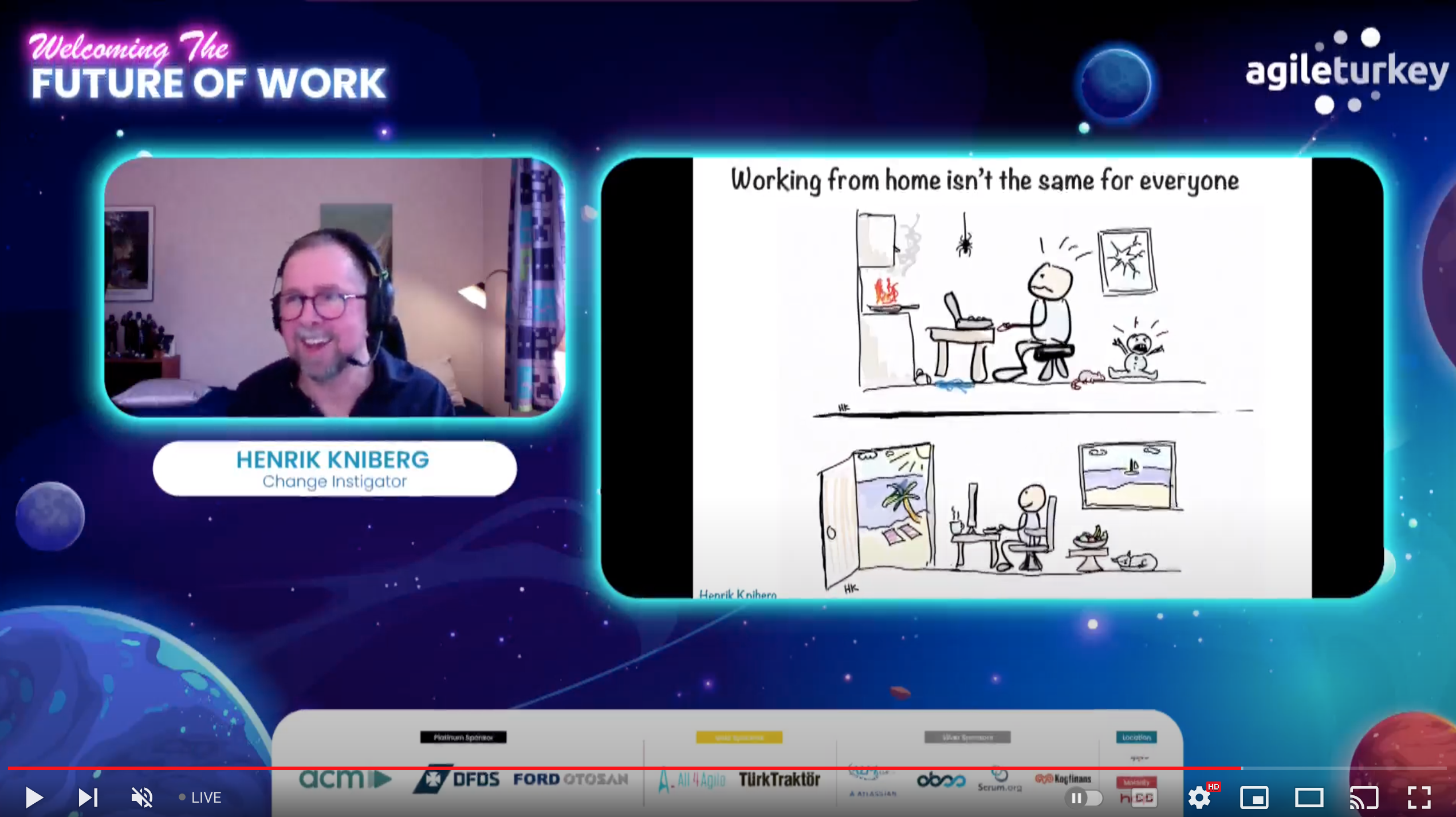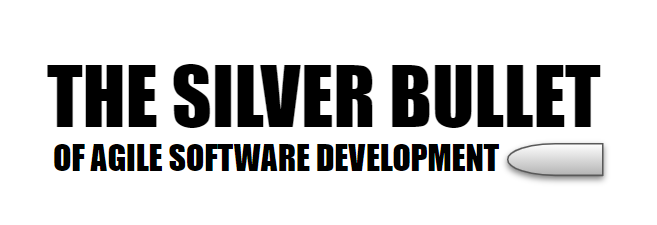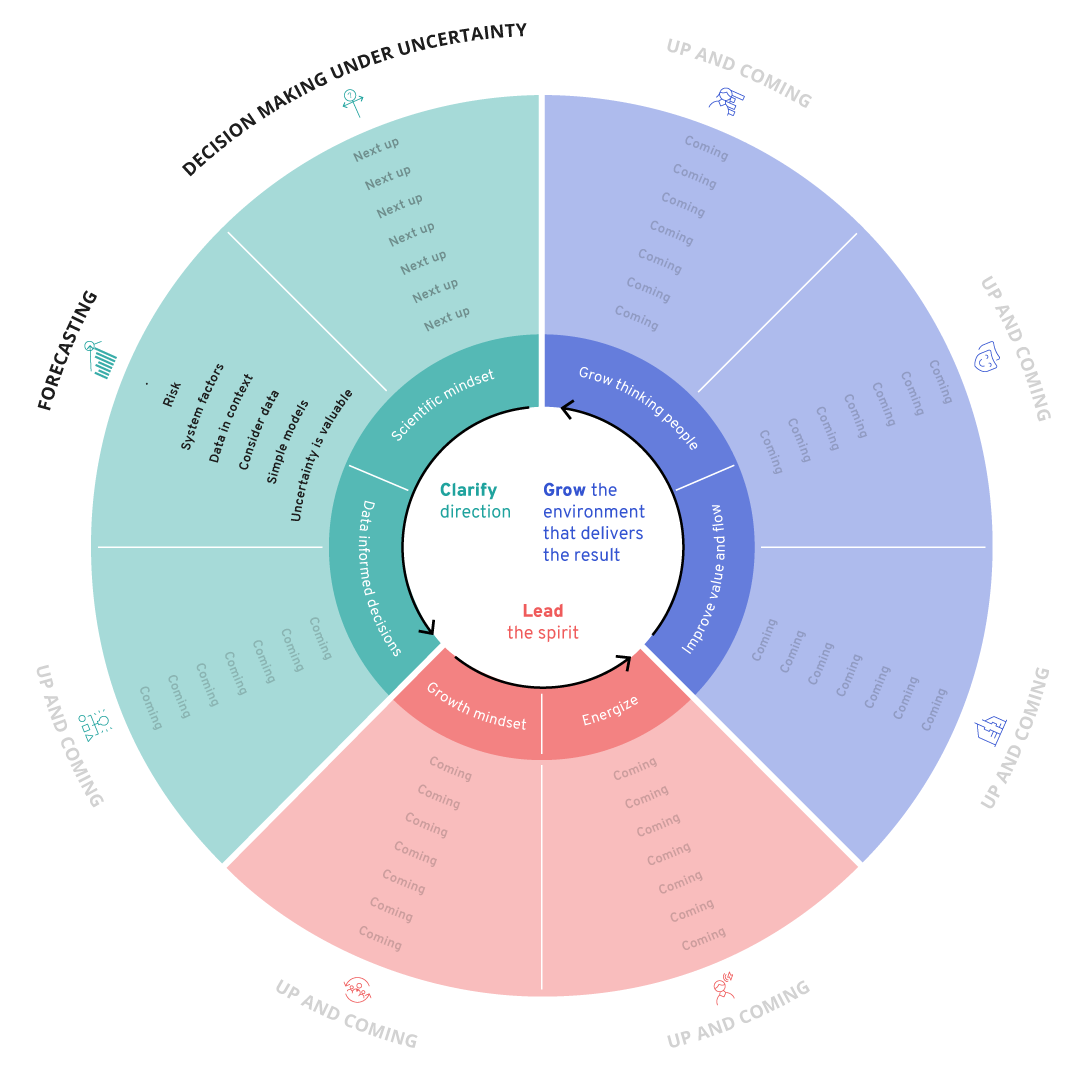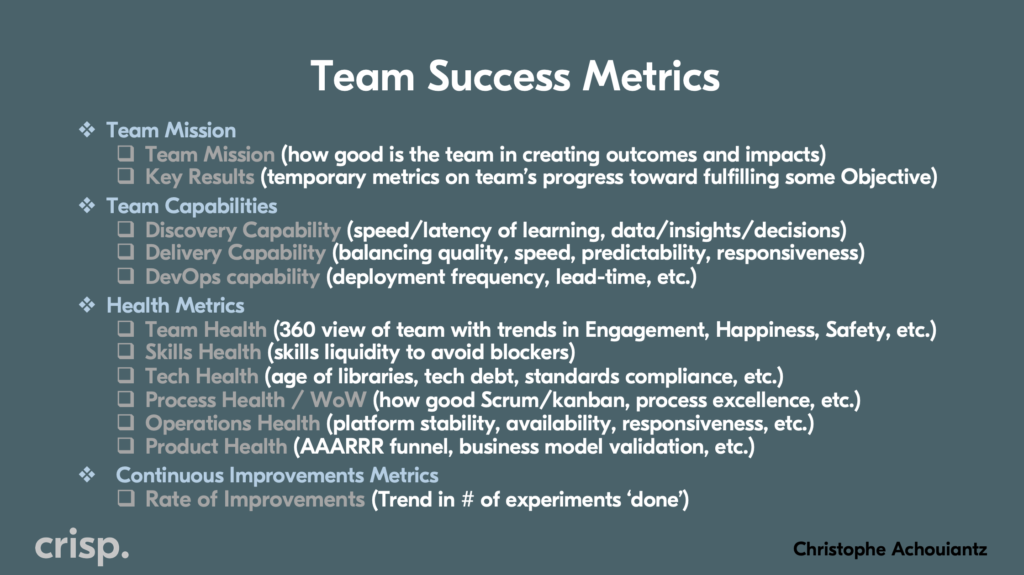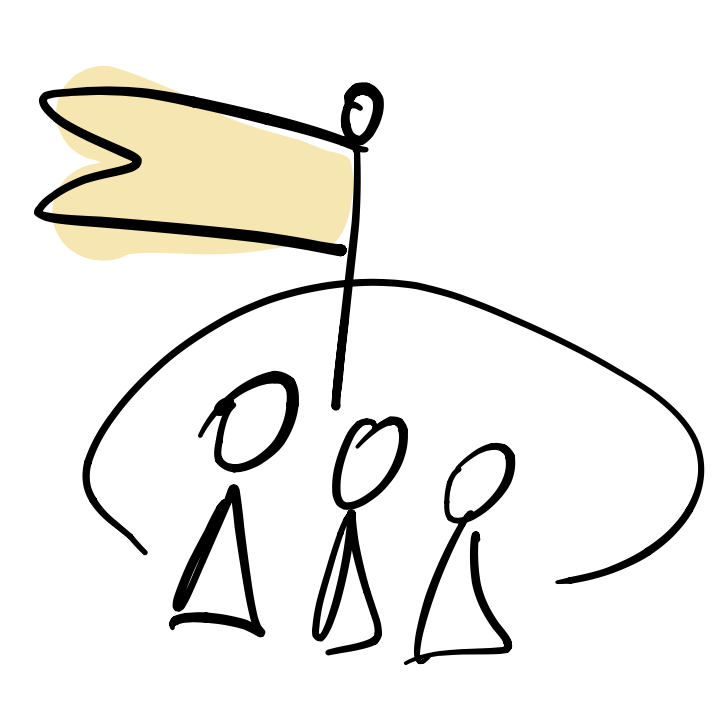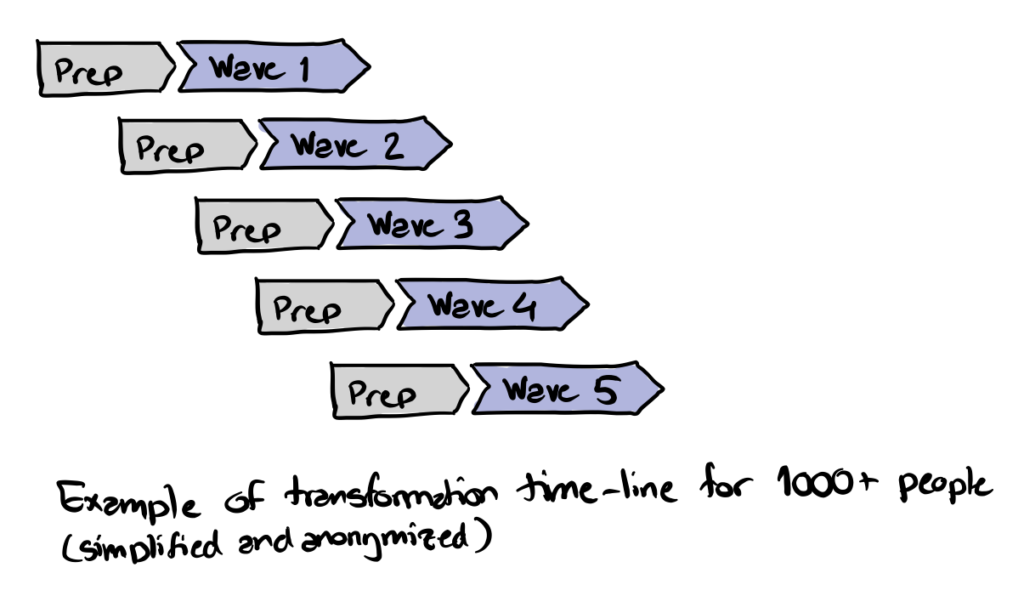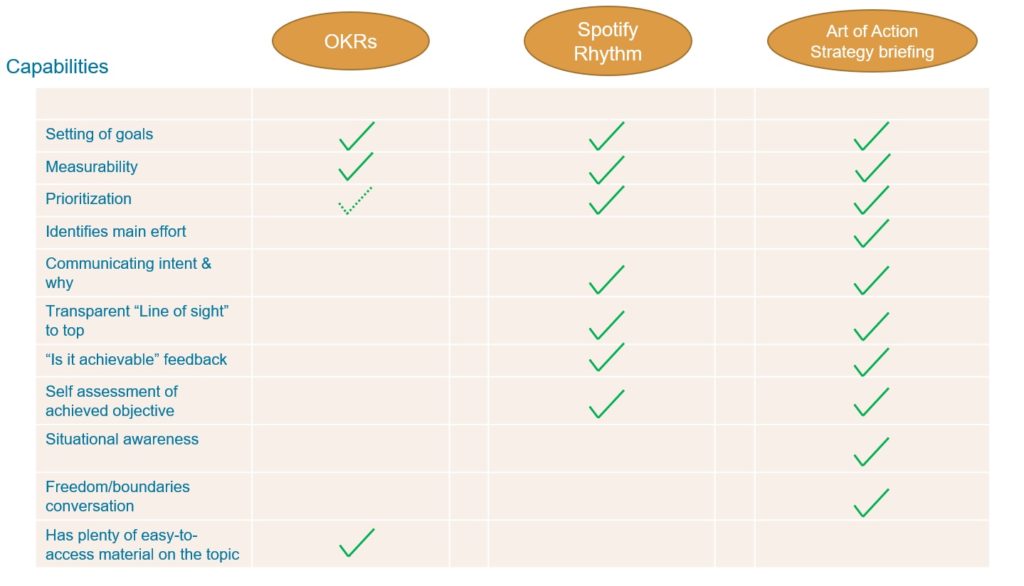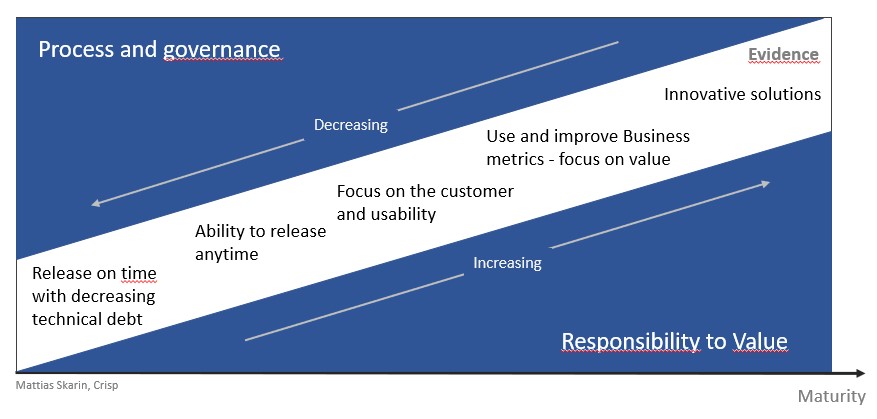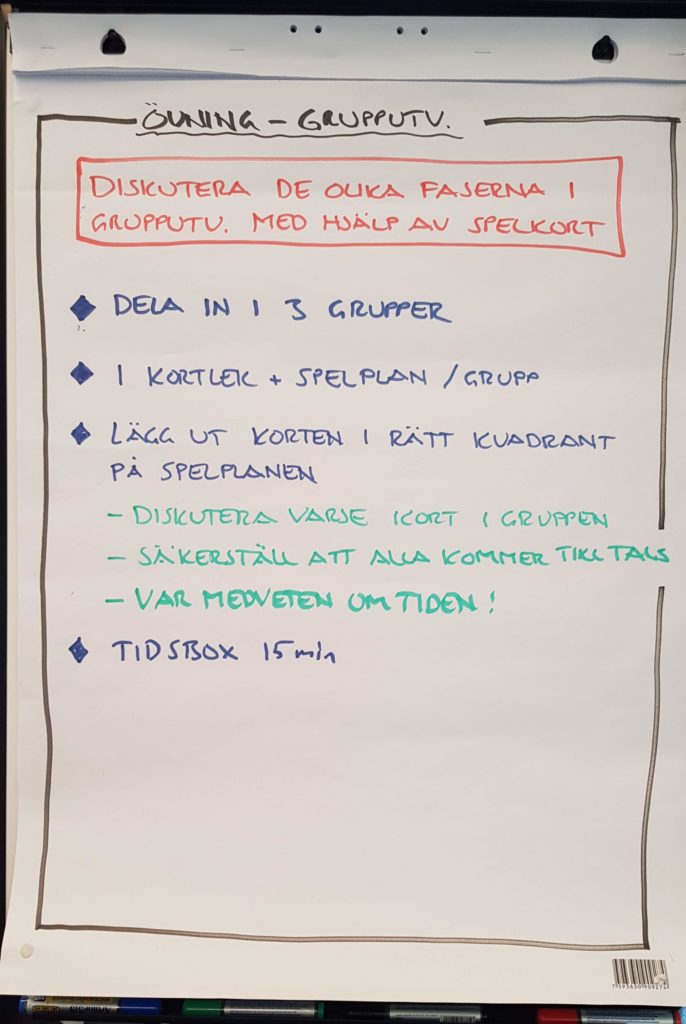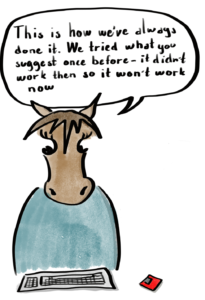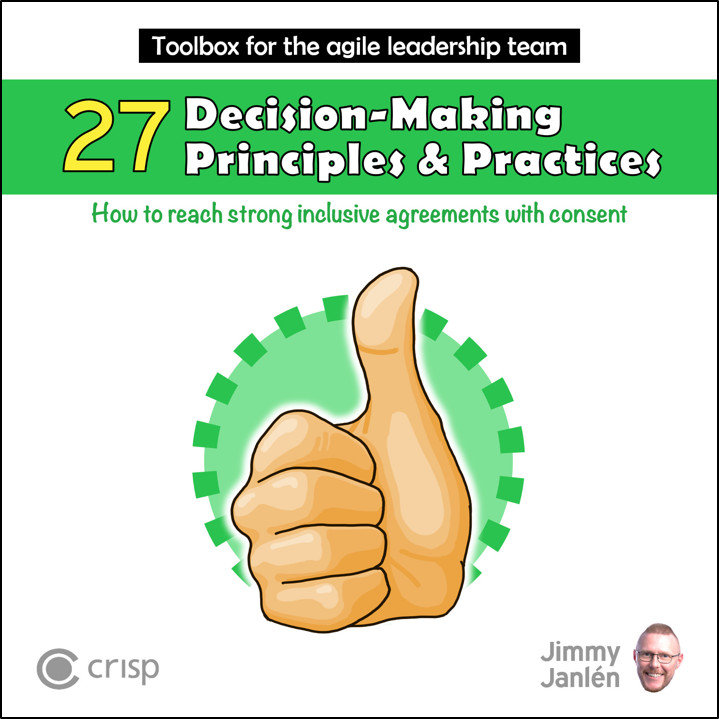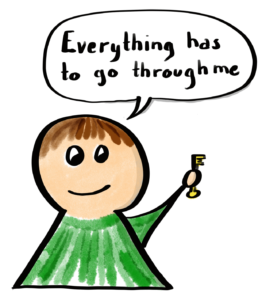Joakim’s Note: You can reach me at https://joakimsunden.com/ Spotify is an exceptional company, the best I’ve ever worked for. When I left the company after more than six years, I wanted to help other companies become more like Spotify. However, I didn’t believe companies could merely copy the organizational structures of tribes, chapters, and squads
Continue readingAre distributed teams the new normal? Slides from my Agile Turkey talk.
Here are the slides for my Agile Turkey summit talk “Are distributed teams the new normal?”. Might write an article about this, the topic feels very relevant these days 🙂 Some sample slides:
Continue readingWhy Professional Coaching matters to an Agile Coach
Professional coaching is one of the four stances of an Agile Coach, and the reason for the word “Coach” in Agile Coach. But yet we see so many misconceptions of what professional coaching is and when to use it. I was recently involved in a couple of discussions about this on LinkedIn, and was surprised that apparently many Agile Coaches still don’t really know what professional coaching is. Here’s why it matters to an Agile Coach.
Continue readingMinimize the gap between Maker and User – slides from my London 2019 keynote
In 2019 I did a keynote at Mind the Product conference in London. I shared some key insights afters years of working with Spotify, LEGO, and Minecraft development. Spoiler alert: the most important insight is in the title of this post. Video recording Slides
Continue readingIndividuals and interactions or processes and tools?
Individuals and interactions or processes and tools?
As the developer cheerfully runs over to work with Sue in the deployment team, with an extra cup of coffee, he is stopped by Charlie, the manager of the deployment team.
-Hey, where are you going?
-To see Sue about the deployment, the developer answered.
-Have you written a ticket?
-What? No, I’m gonna talk to Sue and we’ll do the deployment together as usual.
-Sorry, Charlie said, we have implemented a ticketing system last week, and you need a ticket. We can’t have developers running all over the place disturbing our team all the time!
True story.
Continue readingThe Silver Bullet of Agile Software Development
What should a struggling software development team do in a world of seemingly infinite improvement options?
Continue readingIntroducing: The Agile Leadership Practice Library
Have you ever wrestled with these questions in a leadership scenario?
“How can I get the company to be more proactive and self organized without me being around all the time?”
“I’m a practical guy, I get most theories, but what do I do with them?”
“What is a good start when we are talking about building an Agile organization?”
If so, then this is for you.
Today the Agile Leadership Practice Library is launched
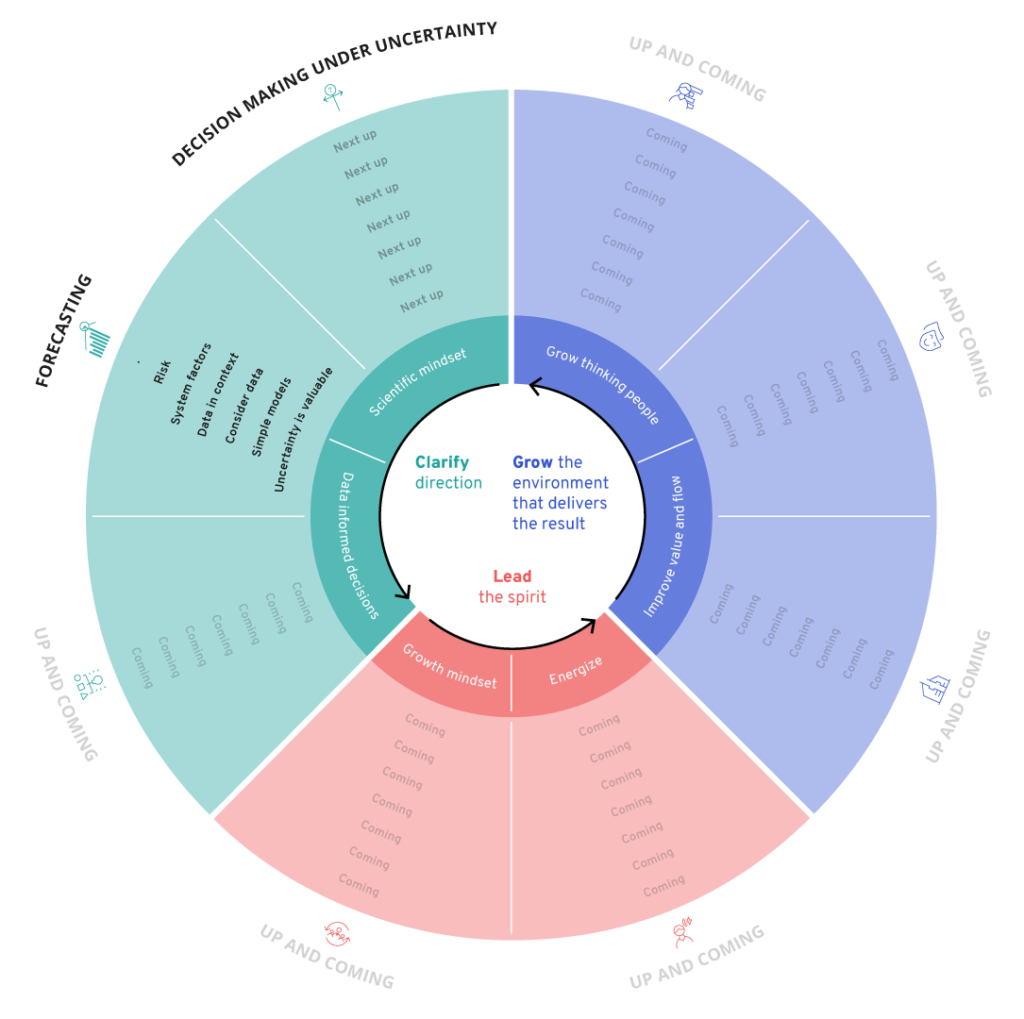
Continue reading
Video: Improve your decision making under uncertainty, using four simple techniques
4 simple techniques to improve decision making, in time of uncertainty
Continue readingTeam Success Metrics
Are we successful as a Team? Can we measure that? We look at 10+ areas of team success and how to measure them. Get inspired to choose the metric you need, right now, on your path to high-performing!
Continue readingShape the future – share an act of leadership!
What does it take to lead in an Agile environment? You have probably seen inspiring acts of leadership that made a difference. We’d like to hear about it! Today we launch activeagileleadership.com. A platform for leadership insights and practices in Agile environments. Want to know more? Let’s start with Mindset. Leading in an Agile environment
Continue readingThe Lead-Squad Protocol
How to successfully drive initiatives, objectives or opportunities that require several squads (or teams) to succeed? How to do this in a way that respects the agile mindset without falling into the command-and-control trap? Today, this problem is more complex than it seems. We’ve designed and built our squads for self-organization and autonomy in the
Continue readingDriving Change in a VUCA world
If the acronym VUCA hasn’t made sense so far, then in these pandemic Covid-19 times it surely must. The acronym stands for Volatile, Uncertain, Complex and Ambiguous. So when people refer to a VUCA world, they refer to a world where you cannot possibly foresee everything ahead of time (if anything, really). This is true to the whole world – the planet Earth, but also to the world, or context if you like, in which you and your organization operate.
Continue readingComparison of three strategy alignment frameworks – OKRs, Spotify Rhythm and Art of Action Strategy Briefing
A downloadable version of this article can be found here.
One of the strongest management trends right now in companies striving towards Agile is undoubtedly OKRs, “Objectives and Key Results”.
But how do OKRs stack up against the alternatives when it comes to alignment frameworks? And what are the potential undesirable behaviors that come with them?
That is what I intend to explore in this article.
Continue readingRemote creation of an Agile vision
The story: Our client wanted help creating an Agile vision for the future “post SAFe”. How could we do this given that they work on multiple sites?
Can this be done remotely? Yes! During these challenging times, I thought of no better opportunity to share how we approached it.

(image credit: Jirka Matousek, Flickr)
Continue reading
Interview with Stephen Bungay on Strategy Execution and the gaps of OKR’s
Interview with Stephen Bungay on:
– What is the “Art of action” ?
– What is the differences/similarities to OKR’s?
– What organisational capabilities needs to be there, for alignment frameworks to really work?
En definition av Agilt mindset

Vad är ett Agilt mindset och hur beskriver man det?
Det är en fråga jag fick finna svar på i och med det sista tillfället i Scrum Master programmet Mia Pilebro (agil coach på arbetsförmedlingen) och jag genomförde på Arbetsförmedlingen. Denna artikel beskriver den definition jag landade i, resonemanget bakom samt varför detta är viktigt då man förändrar en organisation mot en Agil kultur och arbetssätt. De definitioner jag hittade när jag sökte svar på frågan kändes inte kompletta, enligt mitt tycke. Efter diskussion med mina kollegor på Crisp, och med Mia, landade jag i en definition som består av ett antal påståenden, hållningar och en intention.
Continue readingThe Value Responsibility shift – Evolving Beyond the SAFe and LeSS frameworks
Are you struggling with improving at a fast enough pace? Perhaps you started your Scaled Agile journey by applying SAFe, parts of SAFe, or maybe even LeSS. What I’ve found is that once companies have started to apply a certain model, which represents one school of thought. they fail (or struggle hard..) to evolve beyond
Continue readingMake OKRs and Forecasts come alive!
Rigid detailed long-term plans, where progress is tracked based on consumed budgets, are in agile organizations quickly becoming a fading nostalgic memory of the past. They are replaced by forecasts and non-static roadmaps. Gather regularly in front of these visualizations and you will enable learning, sharing and trigger important conversations, resolve dependencies and invite to acts of servant leadership. Make your OKRs and Forecasts come alive!
In this blog I want to give examples of visualizations with accompanying recurring ceremonies. The visualization and accompanying ceremony enable sharing of progress and ensure that impediments and dependencies continuously are addressed and mitigated. It also turns the forecast into a conversation (as opposed to a fixed estimate captured in a project plan that is treated as a promise).
The core question the involved teams answer is:
“How confident do you feel that you will accomplish the Key Result before the end of this quarter?”
Övning kring grupputveckling
Mia Pilebro, agil coach på Arbetsförmedlingen, och jag, genomför ett Scrum Master program med deltagare från två av enheterna på arbetsförmedlingens IT-avdelning. Programmet innehåller sex träffar med en tvådagars workshop som inledning, fyra träffar, så kallade Learning Labs, varannan vecka, och till sist en avslutande heldag för gemensam reflektion och sammanfattning av programmet. Under den andra Learning Lab-träffen som vi hade för några veckor sedan jobbade vi kring grupputveckling; hur utvecklas en grupp från det att den bildas initialt tills det att den möjligtvis blivit en högpresterande enhet? Vad är det för mönster som visas i olika faser av gruppens utveckling, dvs vad är det för beteenden vi generellt kan uppmärksamma och hur kan man beskriva vad som tar gruppens fokus och energi? Dessutom tittade vi på hur ledarens agerande behöver förändras utifrån där gruppen befinner sig i sin utvecklingsresa.
Mia och jag organiserar träffarna med korta teorigenomgångar blandat med gruppövningar för att skapa en bra miljö för lärande och utveckling. Vid detta tillfälle skapade vi en kortlek och spelplan utifrån Susan Wheelans forskning kring grupputveckling, hennes modell ”Integration Model of Group Development” (IMGD), som beskriver fem faser en grupp kan utvecklas genom:
- Tillhörighet och trygghet
- Opposition och konflikt
- Tillit och Struktur
- Arbete och produktivitet
- Avslut
Då vi endast fokuserade på de fyra första faserna under vår träff innehåller spelplanen inte den sista avslutande fasen.
Workshopen blev väldigt lyckad med både hög energinivå och ett bra lärande kring ämnet. Jag vill därför beskriva hur vi organiserade delen där gruppen fick arbeta kring grupputveckling med hjälp av kortleken vi skapade, och också dela materialet att använda hos era arbetsplatser. Länk till spelkort och spelplan finns längre ner i denna artikel.
Anti-Agile – skapa insikter kring förändringsbehov
Anti-Agile är en av mina favoritövningar att facilitera vid uppdrag hos kund. Använder man denna övningen internt inom en organisation så synliggör man ofta många dysfunktioner som finns inom organisationen; kulturellt, strukturellt och hur man arbetar. Övningen fungerar också väldigt bra som en murbräcka i att bryta tron att allt fungerar så bra som det är, och föreställningen att vi är så agila som vi möjligen kan bli. Det senare är många gånger en utmaning då en stark föreställning om sin egna förträfflighet är ett stort hinder att ta sig över som coach för att få kunder att öppna upp sig för coaching och vägledning i sin arbetssituation.
Output vs Outcome vs Impact
Here is an attempt to establish a definition of Output, Outcome and Impacts! It is based on my interpretation of the work of Jeff Patton, Marty Cagan and Clayton Christensen, with some good input from Gojko Adzic, John Seddon and John Cutler.
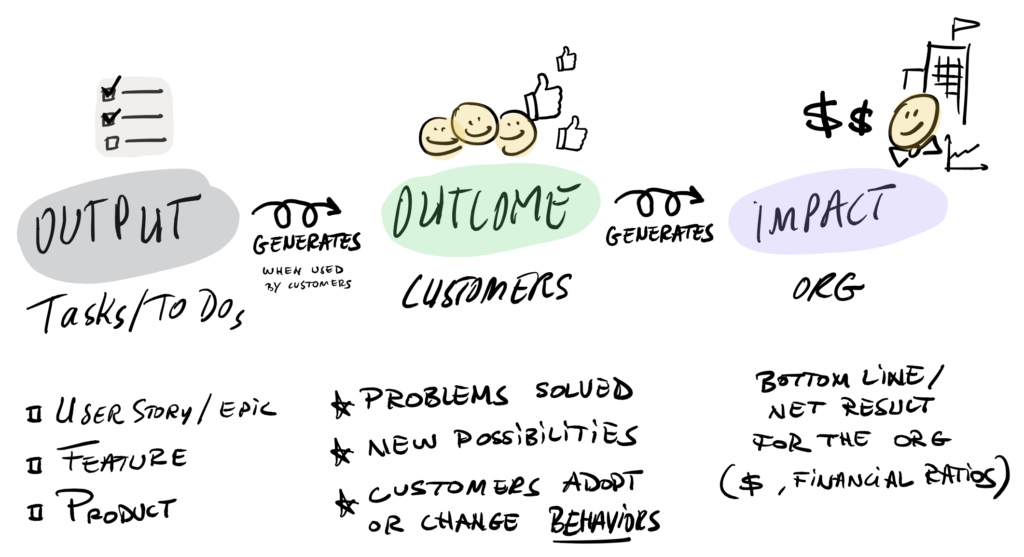
Pair Coaching
Just like pair programming, there are a lot of benefits to pair coaching. In fact, the positives – two pairs of eyes, direct feedback, observation from two different perspectives – are even stronger motivators for pairing up when coaching! We see a lot of pairing when it comes to teaching classes, and larger facilitations, why not apply the same benefits to coaching as well!
The coaching context
In an individual coaching session, there are a lot of things going on. First, there is the content of the conversation. Then there are the thought processes and emotions within both the coach and the person being coached. As well as the communication and dynamics of the relationship between them. This is already a complex situation that can benefit from an added perspective. Imagine the complexity when we start talking about team or group coaching.
Evolutionär förändring
Inledning
Ser jag tillbaka på mina år som konsult och coach på Crisp har det skett en rätt stor förändring i vilka typer av uppdrag vi får. Många organisationer möter en allt mer föränderlig omvärld med snabbfotade kunder; är de inte nöjda med det utbud som organisationen levererar går det till en konkurrent i stället. Det räcker inte längre med att enskilda team fungerar bättre; hela organisationer behöver förbättras för att nödvändiga effekter skall skapas.
För att lyckas med förändringsarbetet behöver vi:
- Utgå från att organisationer är komplexa system vilket kräver en organisk förändring snarare än ett plandrivet och mekaniskt sådan.
- Genomför förändringen evolutionärt drivet genom de hinder som teamen upplever,
- Successivt forma den struktur och arbetssätt som just den specifika organisationen bäst behöver för att leverera värde.
Agile in Public sector and the “Play with the thought” Digitalisation kit
Slides from Agile Islands 2020 – “Agile in Public sector” and the “Play with the thought” Digitalisation kit
Continue readingAnti-Agile Personalities – Part 2
In my previous blog post I listed personalities on the management side that stood in the way of efficient, modern product development. In this post, I will cover some of the personalities you might find in the actual development teams.
Continue readingEfficient, effective and inclusive decision-making – A bold statement, a book and a video
I hereby proclaim that; there are ONLY 10 different ways a decision can be made!
At least in a meeting with several participants.
Sorry for starting with this click baity statement. On the other hand – I haven’t been disproven so far. Regardless of if this is true or not, I believe that the art and skill of decision-making is an increasingly important topic. Why do I believe that?
In many organizations, I often encounter the assumption that a decision is either made by one person, or by a group that has discussed a proposal until everyone agrees. If this is actually true, your ability to conduct effective, efficient and inclusive decision-making is sadly limited. A rapidly increasing number of companies go agile, organizing people into a network of autonomous teams, supported by teams of managers and leaders.
Decision-making and ownership are decentralized to those closest to the problems and opportunities. Leadership is no longer manifested in hierarchies of individual accountability, but in interconnected layers of supportive leadership teams. Just as agile teams collaborate to delivering value to users and customers, so must the leadership collaborate when working, meeting and making decisions. A leadership team’s ability to reach a shared understanding through debates and discussions, explore options and then together decide on the best path forward – is crucial. The speed to decision and time to review and evaluate the impact will dictate your whole organization’s ability to quickly respond, learn, adapt and improve.
With this blog I hope to expand your toolbox and inspire you to experiment with a more varied approach to decision-making.
.
Continue readingAnti-Agile Personalities – Part 1
The technology development is going in lightning speed nowadays and almost every company has at least 10 competitors who can offer their customers the same or better experiences or goods. This puts quite a lot of pressure on companies and organisations to be nimble and customer focused which in turn does the same on the people working for them. Certain traits have become more important in employees than before, whether it is management or development teams, such as trust, flexibility, passion, curiosity, ability to collaborate, humility, and innovativeness. It also means that personalities not defined by these traits that still worked very well in traditional, hierarchical organisations actually might be obstructing efficient development in modern organisations.
Agile 2019 – A conference summary
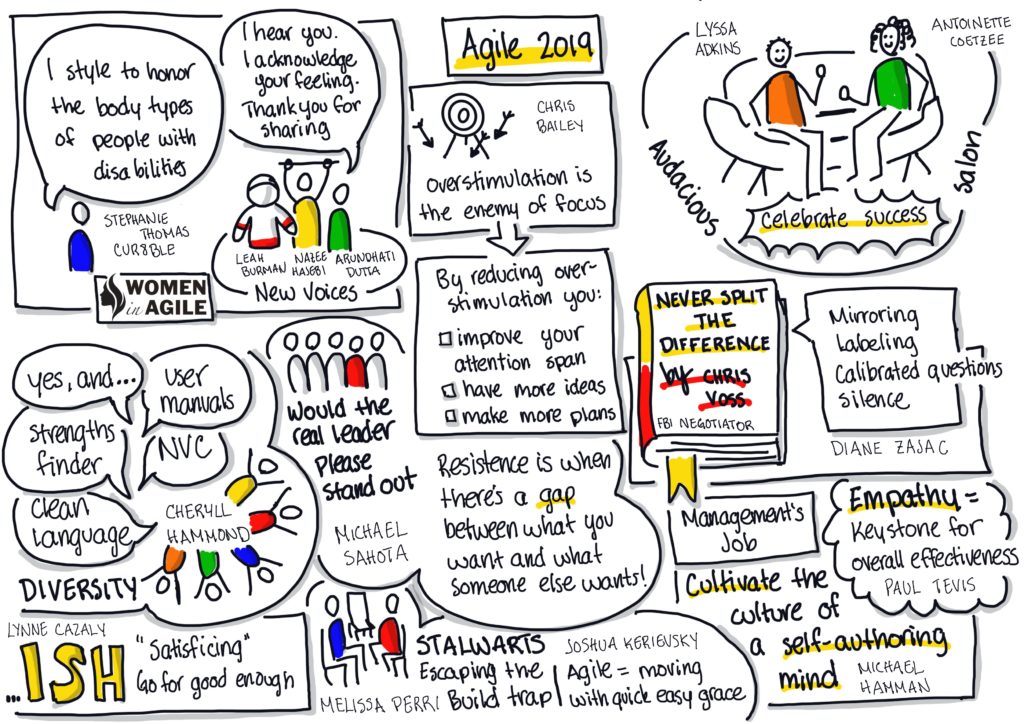
Agile 2019 in a nutshell: Jam packed with inspiring, informative talks! I tried to sum up my experience when I came home from DC a couple of weeks ago, but there were just too many good things to say! So I’ll leave you with the graphic above with some of the highlights, and I’ll share what I’ve actually followed up on since I’ve been back.
The Product Roadmap Agility Checklist
I see many versions of product roadmaps in my work. Unfortunately very few pass this agility test. Does your product roadmap pass the Product Roadmap Agility checklist?
Download the checklist here.

How self driving car company AID builds its organisation using Agile – interview with the CEO
How do you grow, innovate, and deliver – at the same time? AID (Audi’s unit for self-driving cars) uses Agile to build its organisation at the same pace as their product. We interviewed their CEO Karlheinz Wurm on why they have chosen to do so. We also sneaked in a question – how is it
Continue reading